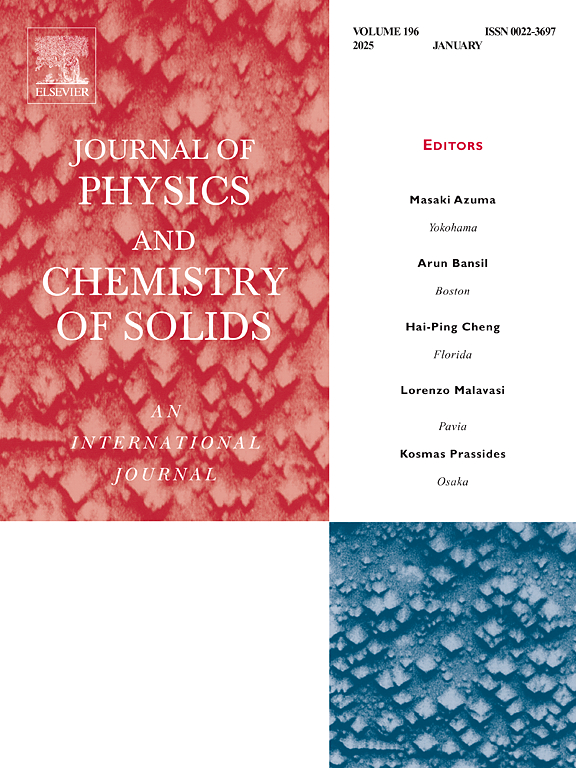Construction of CuCo2S4 nanoarrays on nickel foam for synergistic effects in supercapacitor electrodes
IF 4.3
3区 材料科学
Q2 CHEMISTRY, MULTIDISCIPLINARY
引用次数: 0
Abstract
CuCo2S4 sulfide is directly synthesized on nickel foam (NF) by a two-step solvothermal method. The material forms a nanoparticle array structure on conductive substrate NF. The effects of different morphologies on the electrochemical properties of the conductive and non-conductive CuCo2S4 substrates and the internal mechanism of different components were studied. Various microstructures show that CuCo2S4/NF provides a large open space and a high specific surface area due to the unique nanostructure, as well as the rich porosity of NF and the support of the overall structure, which provides a rich active site for Faraday reaction, ensures the rapid transfer of ions, and provides a larger specific capacitance for bimetal synergy. The CuCo2S4/NF electrode material has A particular capacitance as high as 1013.76 F g−1 at 1 A g−1. In addition, based on the asymmetric supercapacitor composed of CuCo2S4/NF as the positive electrode and activated carbon as the negative electrode, it has a high energy density of 44 Wh kg−1 at a power density of 800.0 W kg−1, and the stability is 88.3 % after 10,000 cycles of 8 A g−1.
求助全文
约1分钟内获得全文
求助全文
来源期刊
CiteScore
7.80
自引率
2.50%
发文量
605
审稿时长
40 days
期刊介绍:
The Journal of Physics and Chemistry of Solids is a well-established international medium for publication of archival research in condensed matter and materials sciences. Areas of interest broadly include experimental and theoretical research on electronic, magnetic, spectroscopic and structural properties as well as the statistical mechanics and thermodynamics of materials. The focus is on gaining physical and chemical insight into the properties and potential applications of condensed matter systems.
Within the broad scope of the journal, beyond regular contributions, the editors have identified submissions in the following areas of physics and chemistry of solids to be of special current interest to the journal:
Low-dimensional systems
Exotic states of quantum electron matter including topological phases
Energy conversion and storage
Interfaces, nanoparticles and catalysts.

 求助内容:
求助内容: 应助结果提醒方式:
应助结果提醒方式:


